
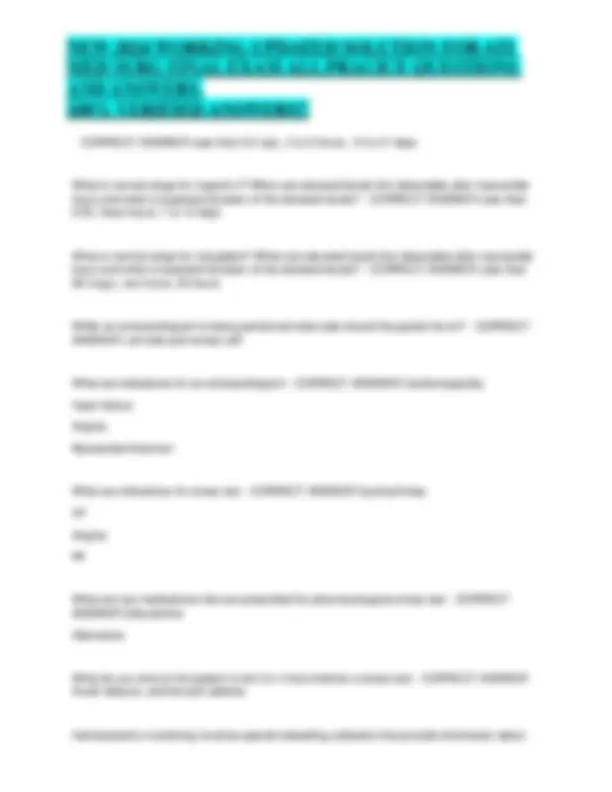

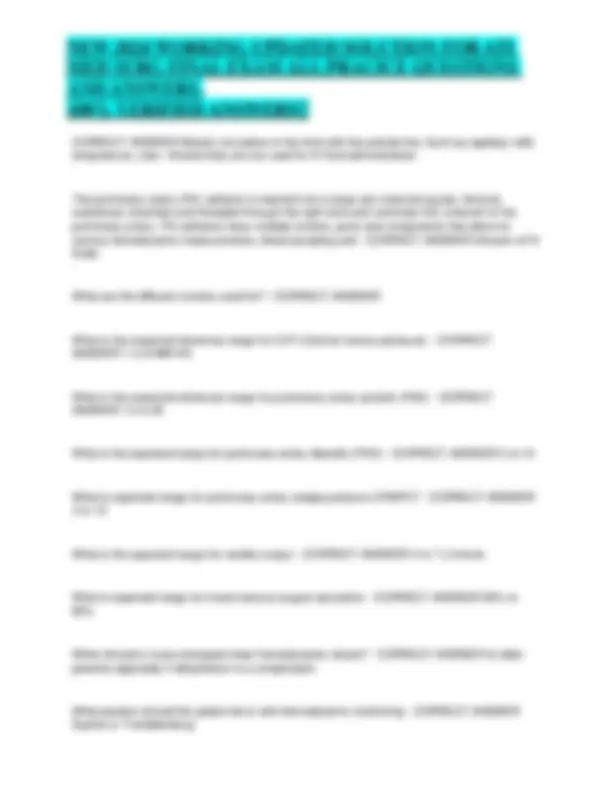
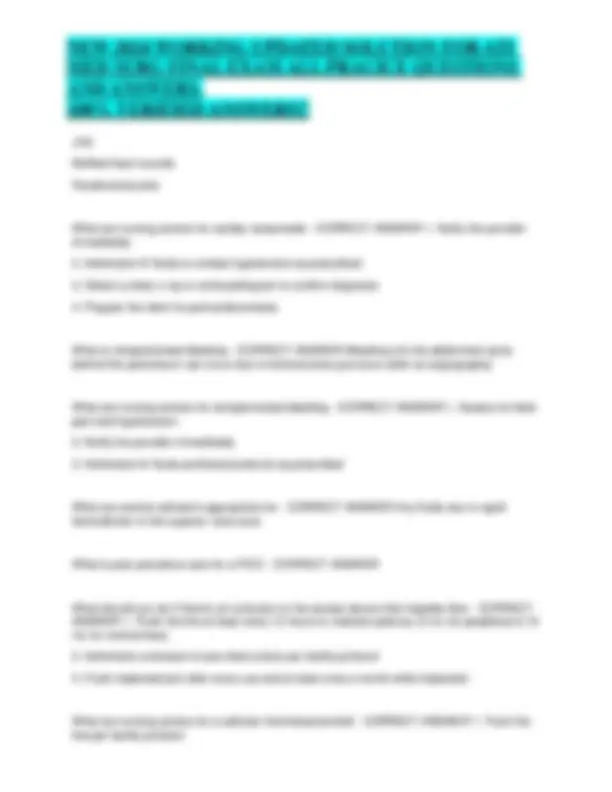

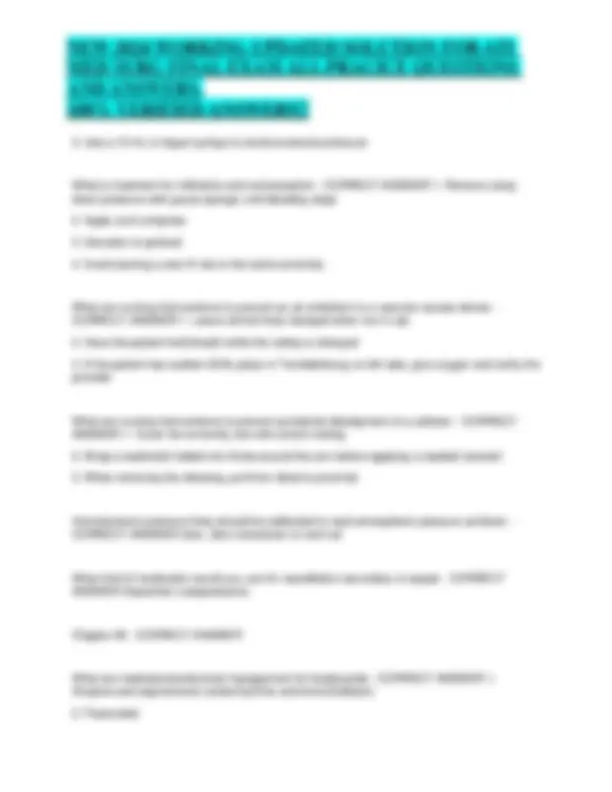




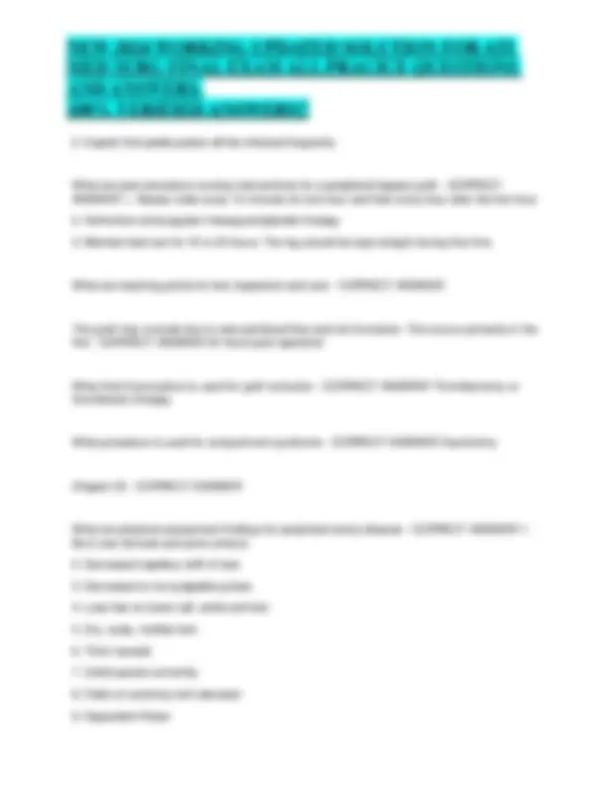



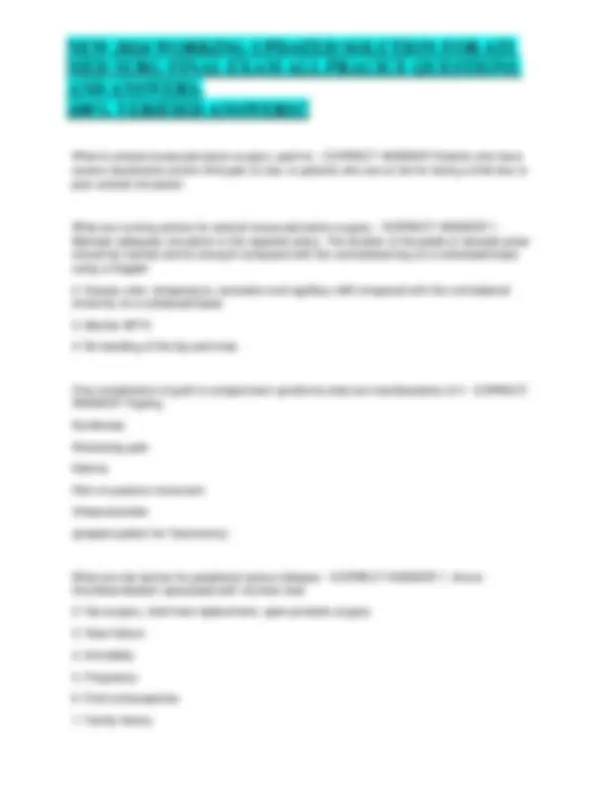
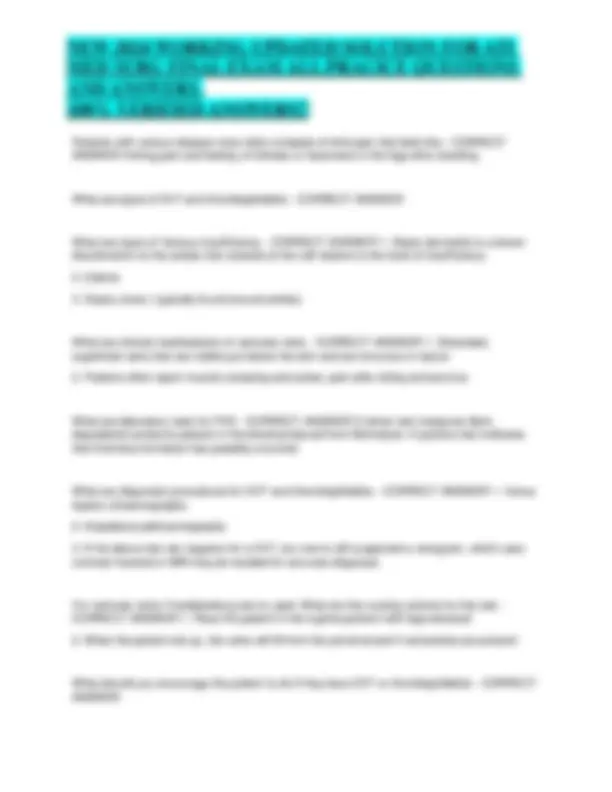

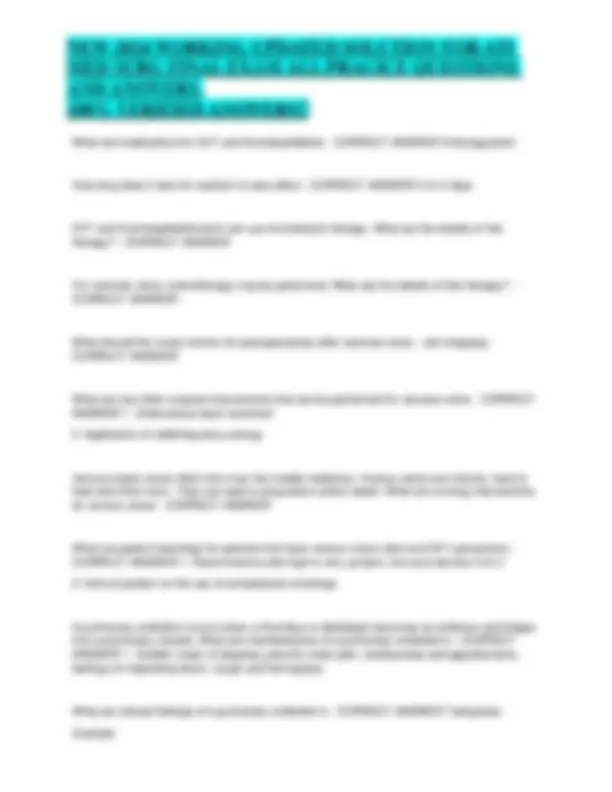



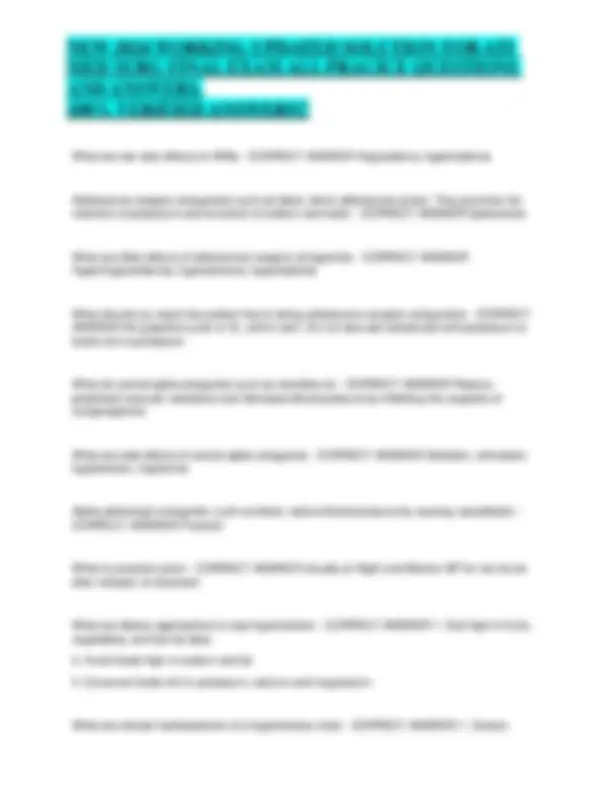




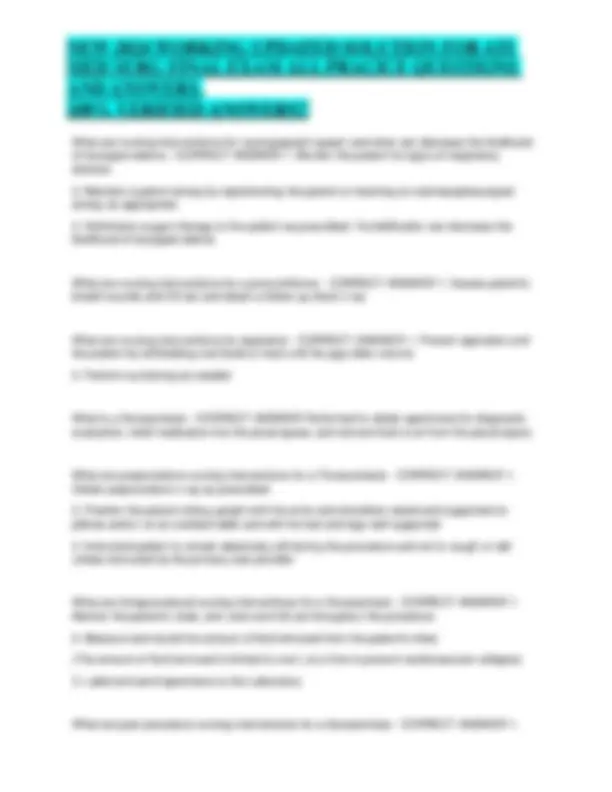

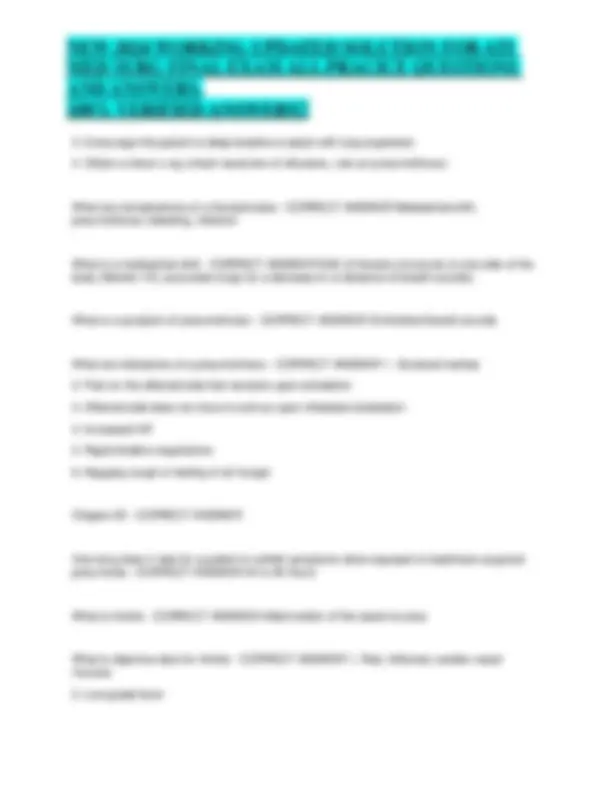

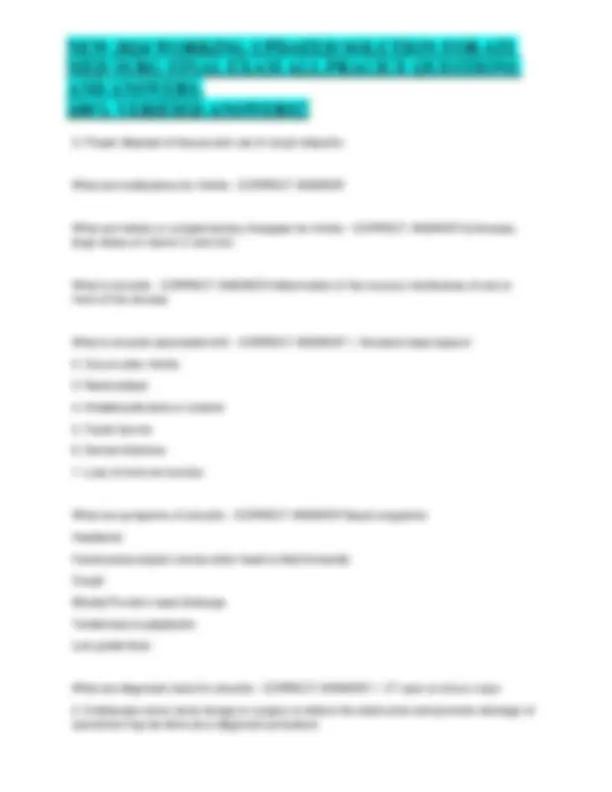
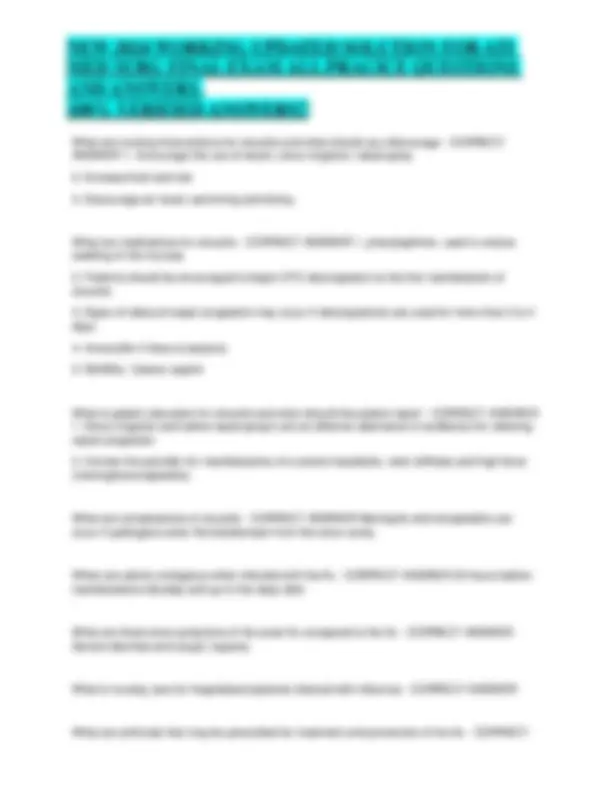

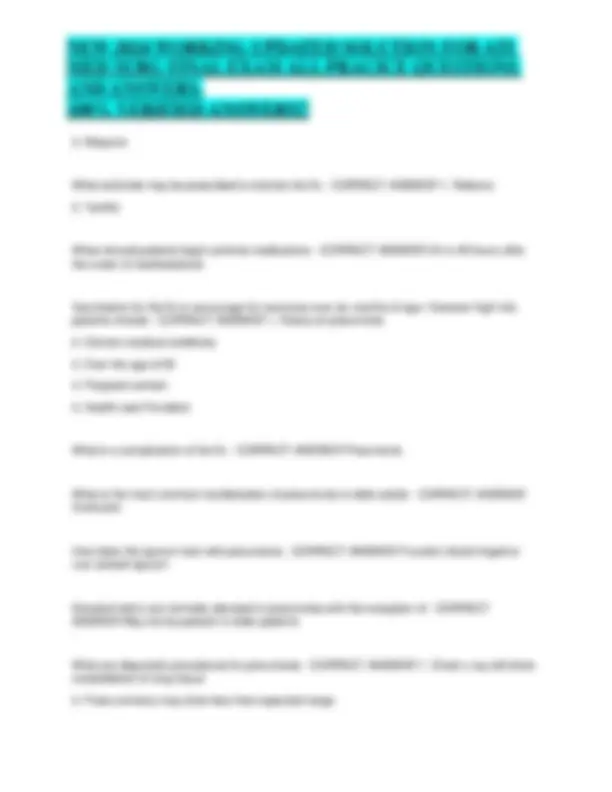

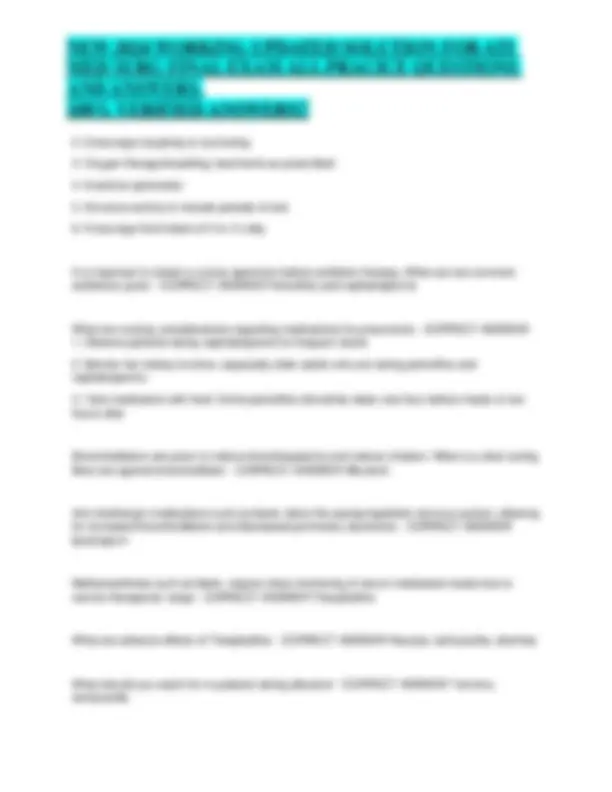

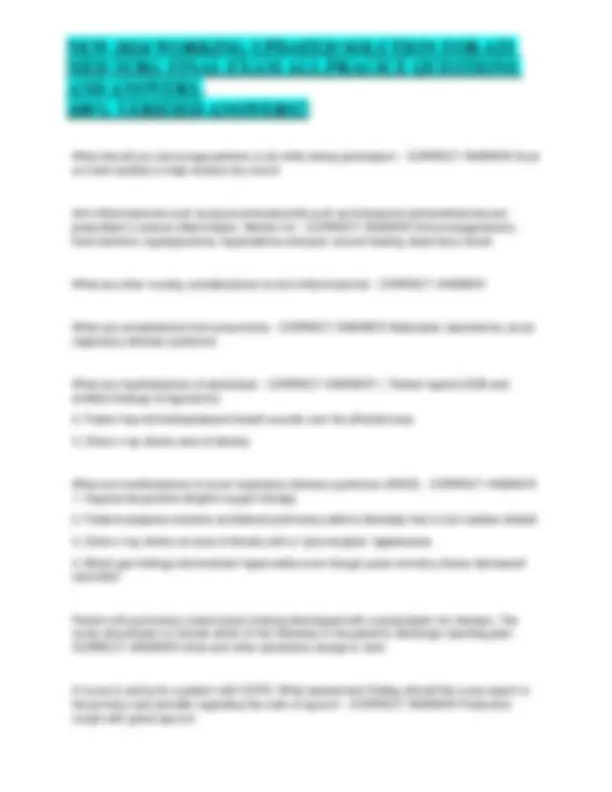
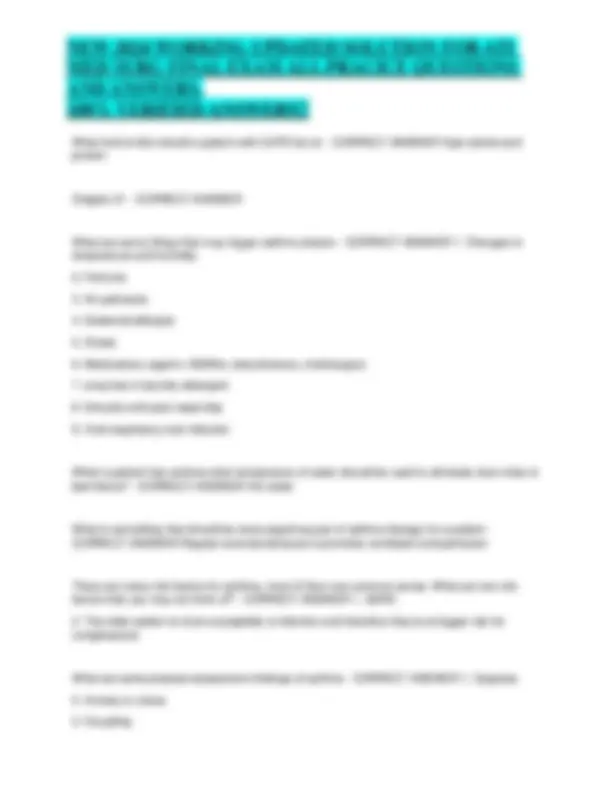



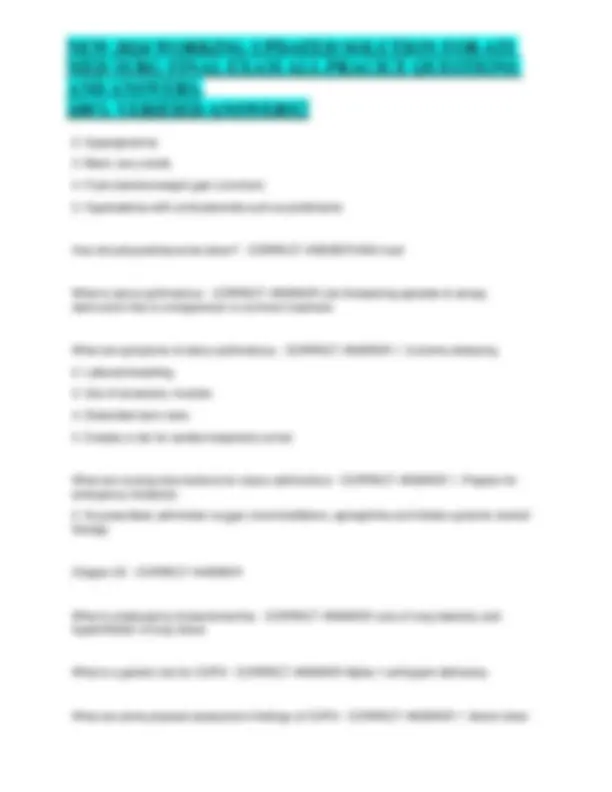

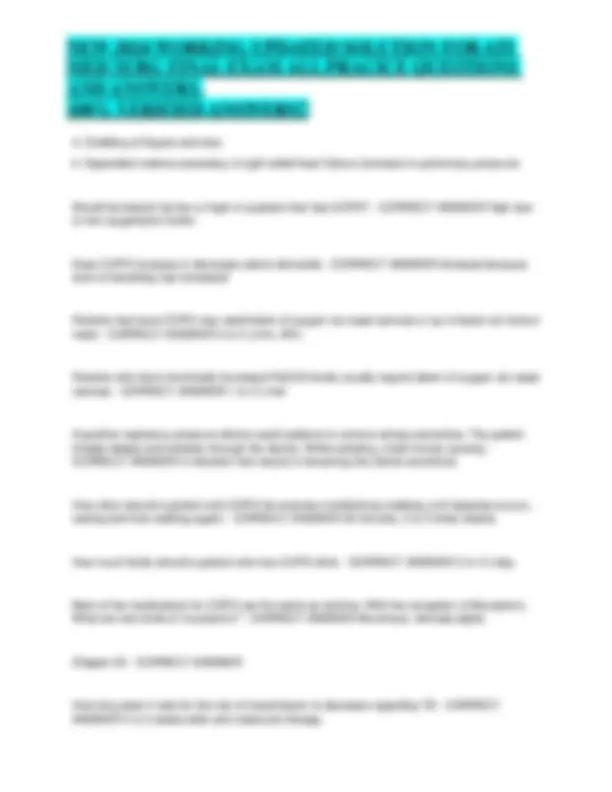

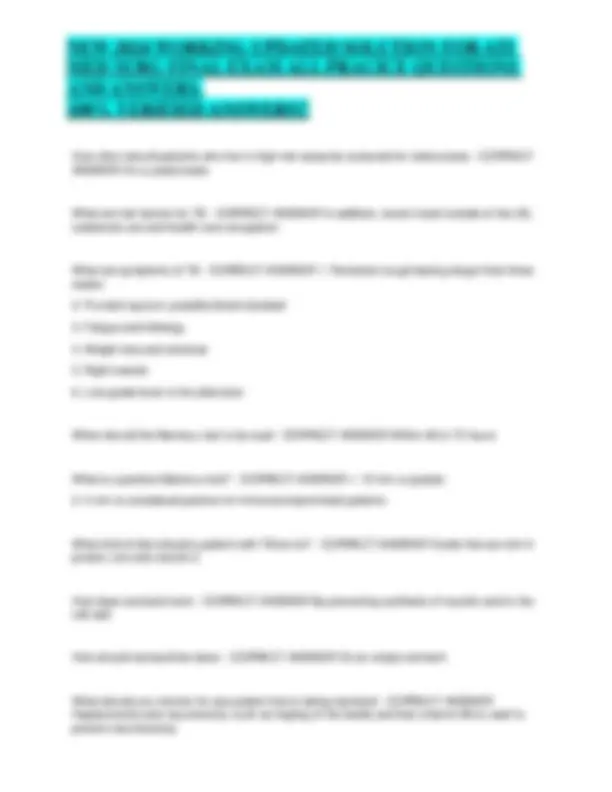
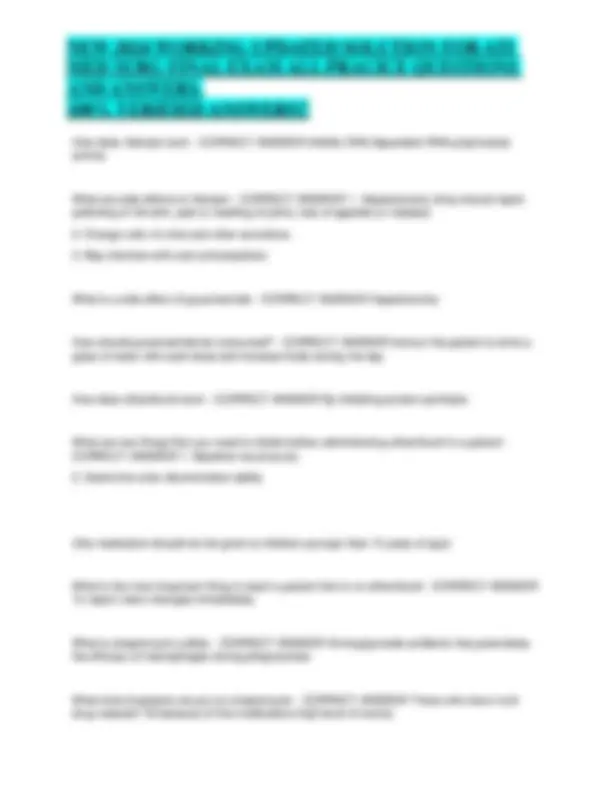

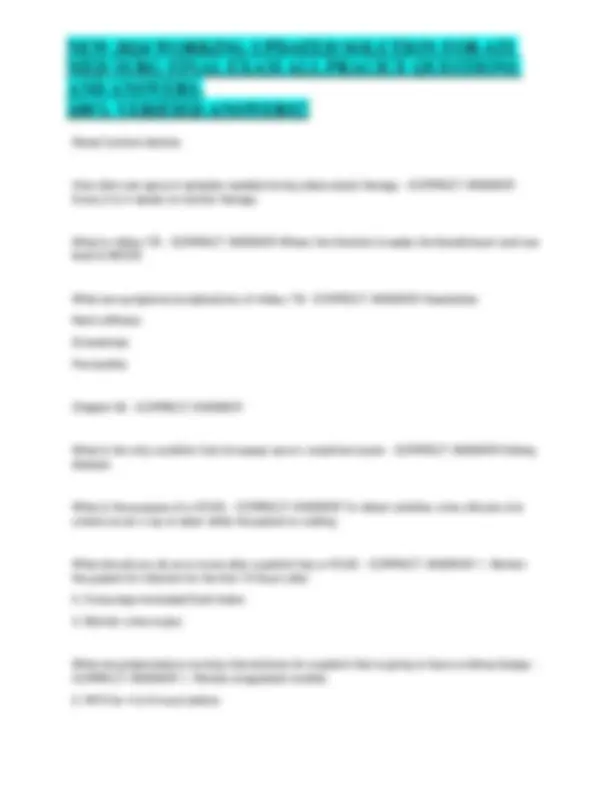

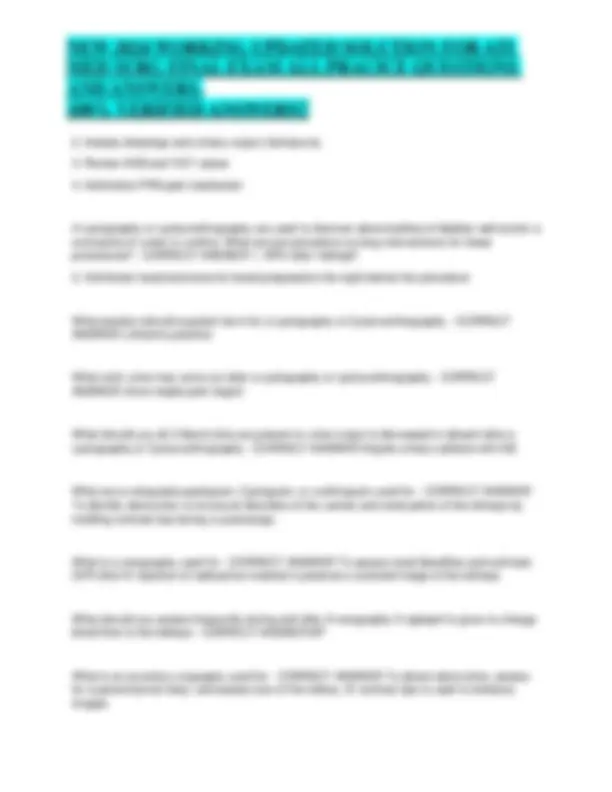







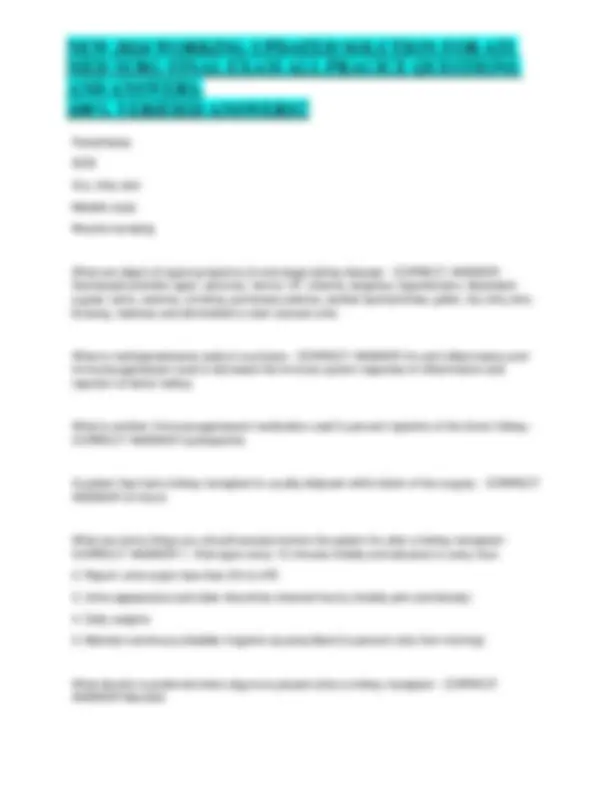

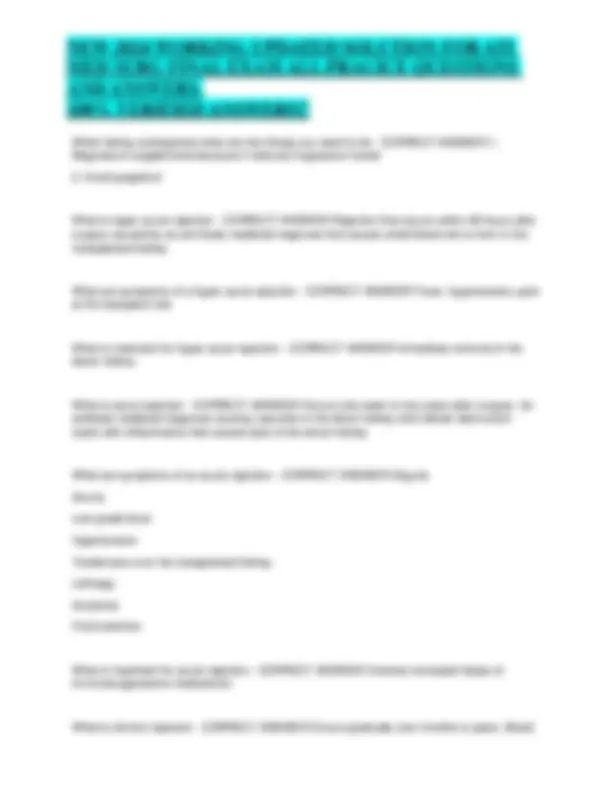

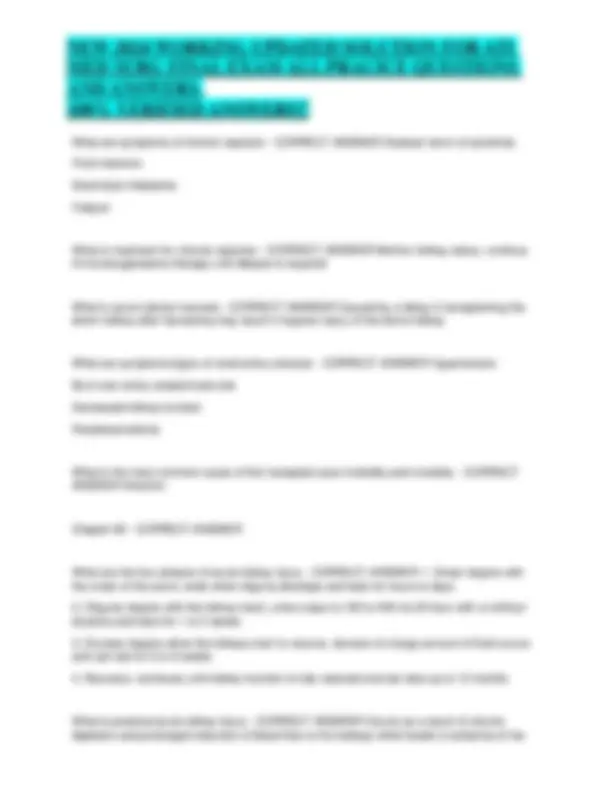

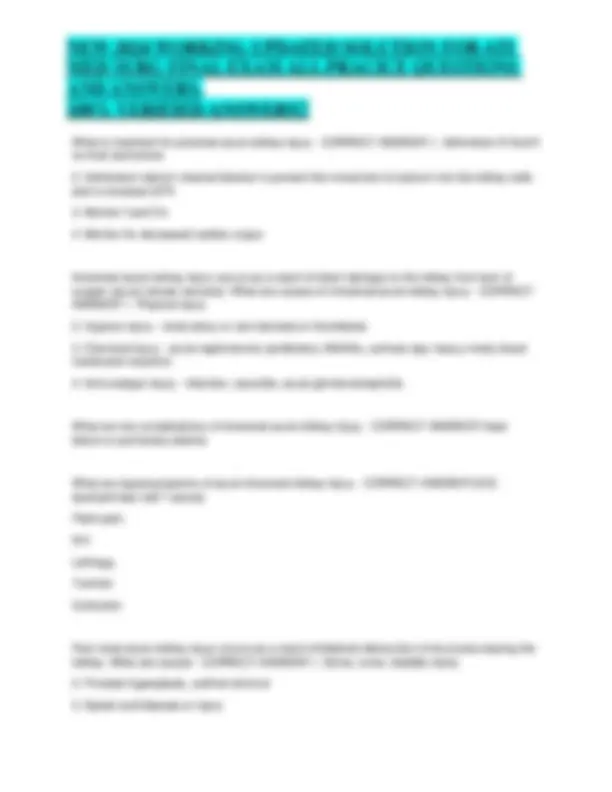

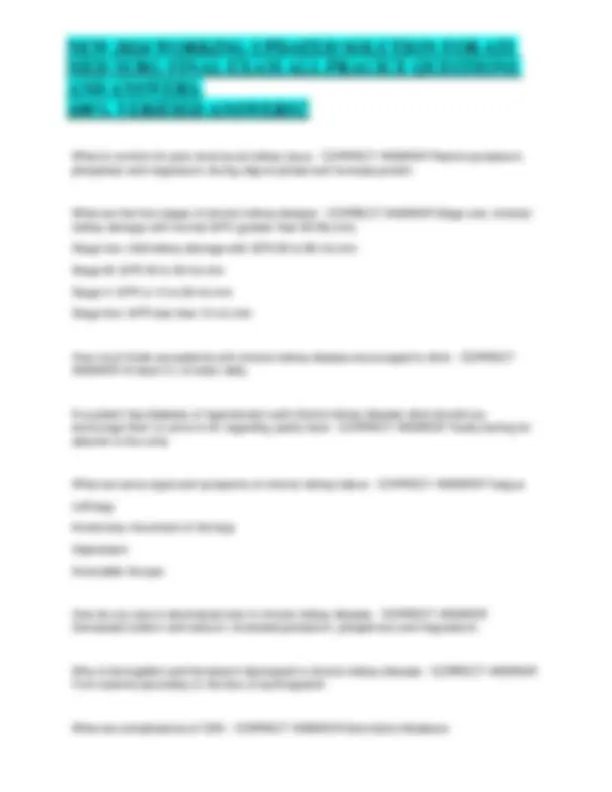

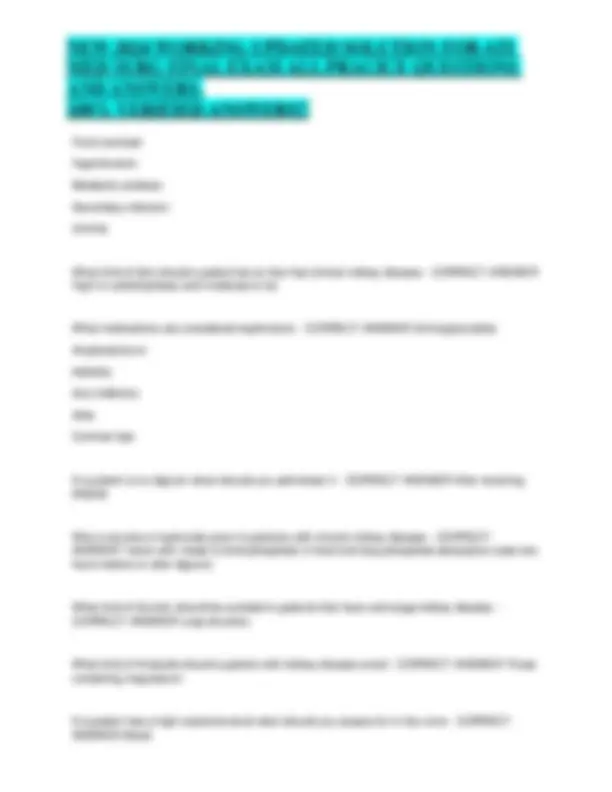
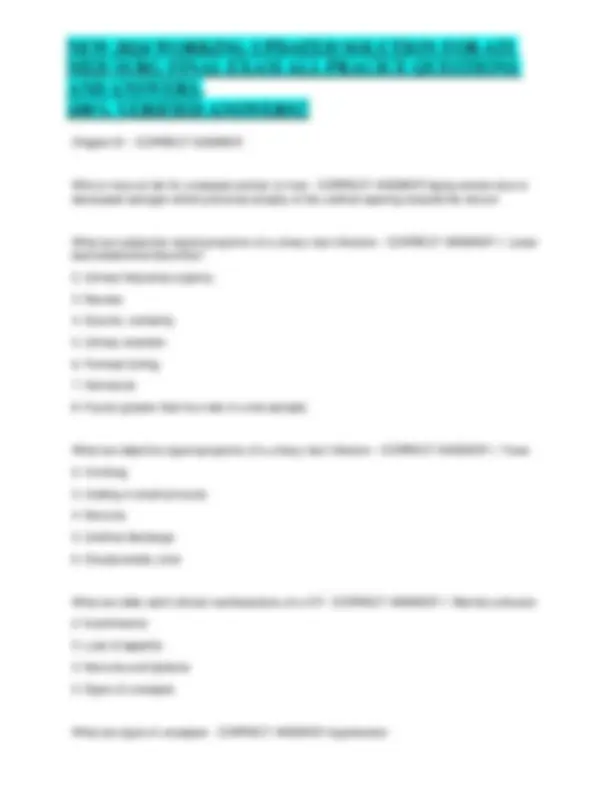

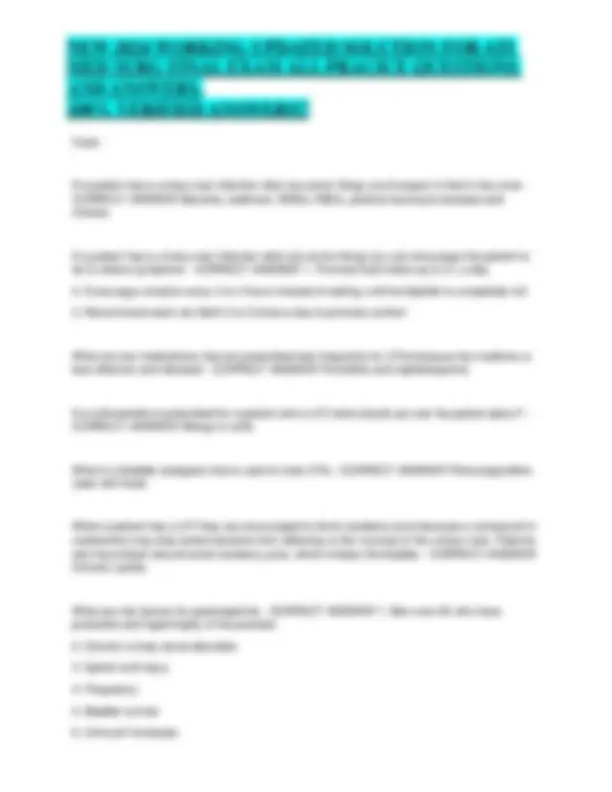

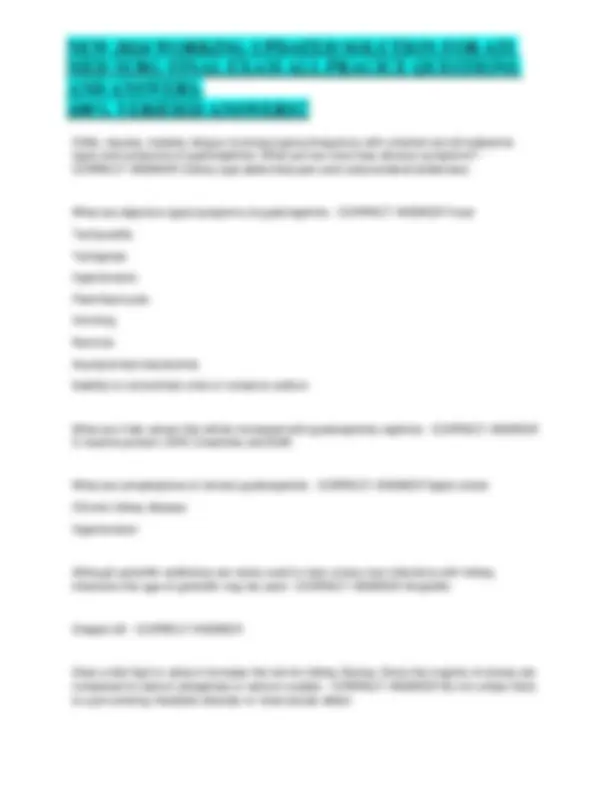

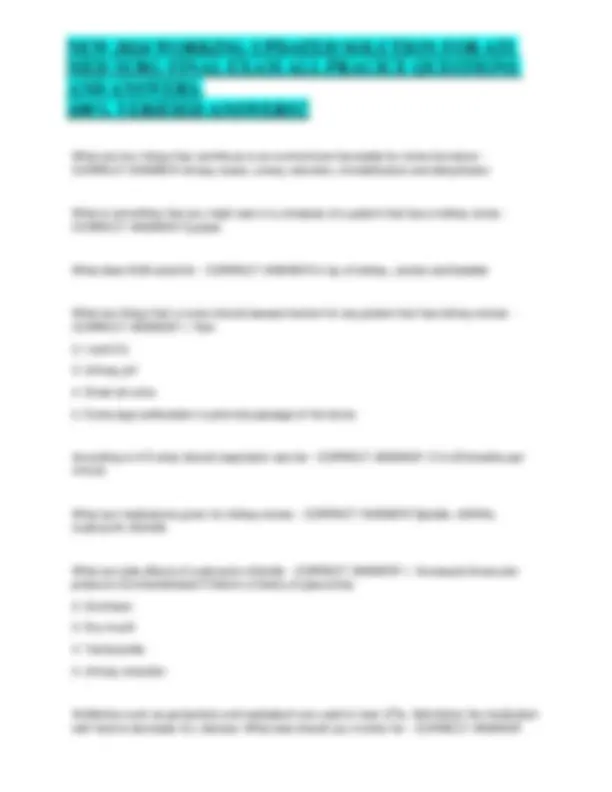

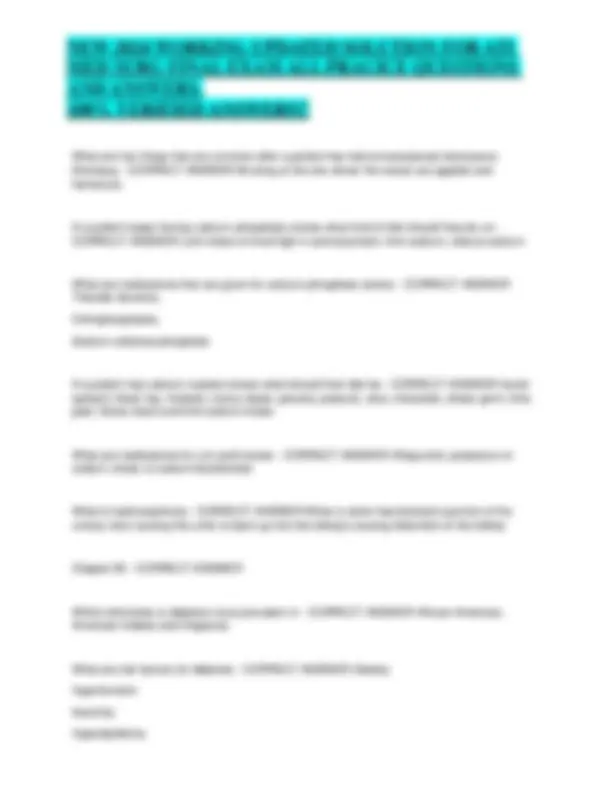

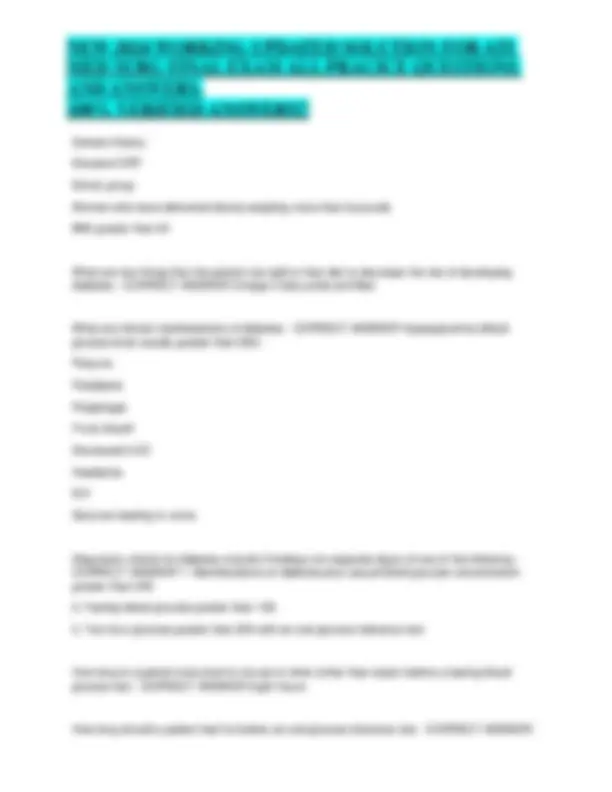

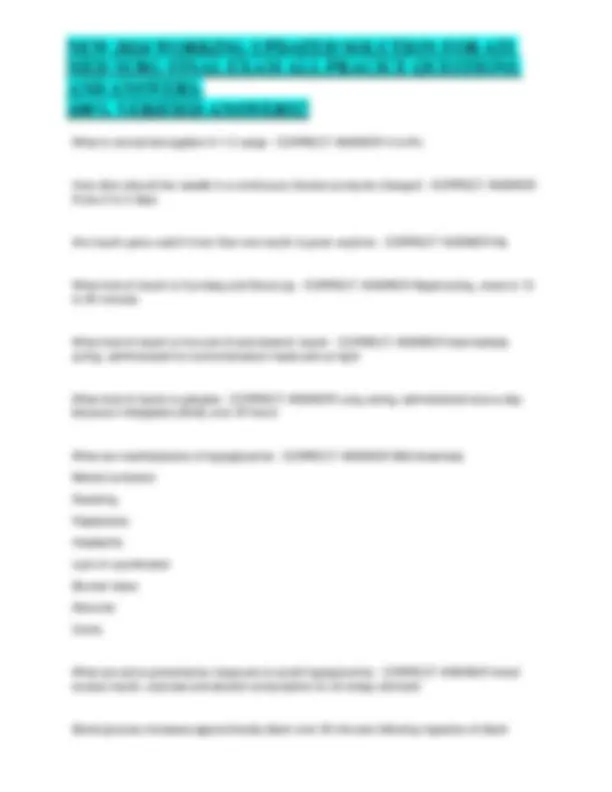

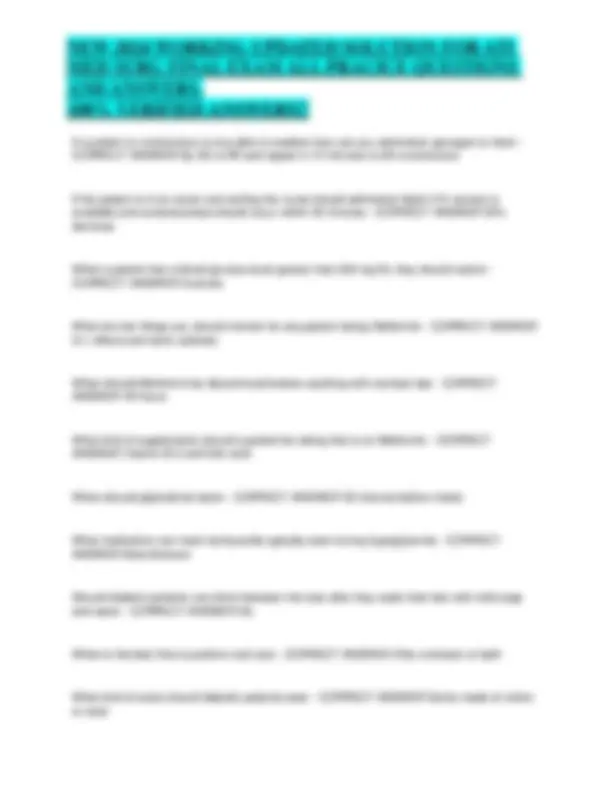

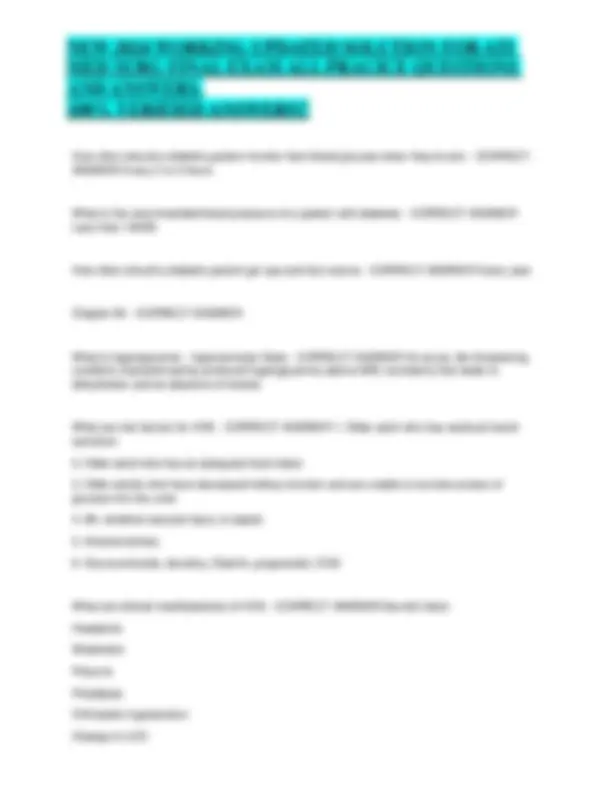

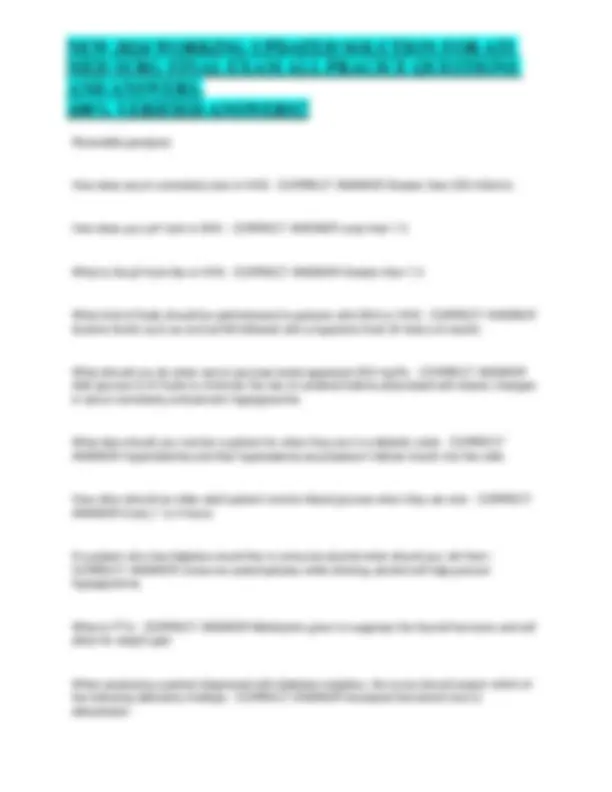

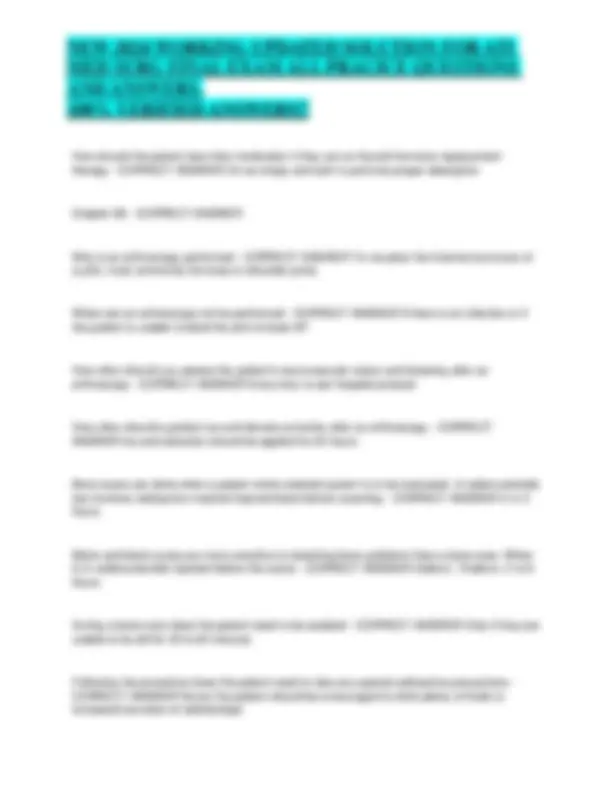



Study with the several resources on Docsity

Earn points by helping other students or get them with a premium plan


Prepare for your exams
Study with the several resources on Docsity

Earn points to download
Earn points by helping other students or get them with a premium plan
Community
Ask the community for help and clear up your study doubts
Discover the best universities in your country according to Docsity users
Free resources
Download our free guides on studying techniques, anxiety management strategies, and thesis advice from Docsity tutors
The correct answers to practice questions related to pulmonary artery pressures, post-procedure care for picc lines, patient teachings for venous ulcers, medications for pneumonia, and various other topics in the cardiovascular and renal systems. It is an essential resource for nursing students preparing for their medsurg final exam.
Typology: Exams
1 / 144

This page cannot be seen from the preview
Don't miss anything!





























































































What is normal range for cholesterol, HDL, LDL
What is the desired INR range for people taking warfarin
What is an indicator of cardiac tamponade
Patients scheduled for a coronary artery bypass graft should not take anticoagulants for at least blank prior to the surgery to prevent excessive bleeding
A patient is admitted with a diagnosis of Bradydysrhythmia. What assessment finding requires immediate intervention?
Following insertion of a permanent pacemaker, a patient states they cannot get rid of these hiccups. Why is this potentially a problem?
Chapter 27 - CORRECT ANSWER
What is the normal range for creatine kinase? When are elevated levels first detectable after myocardial injury and what is expected duration of the elevated levels?
What is the normal range for troponin T? When are elevated levels first detectable after myocardial injury and what is expected duration of the elevated levels?
blood volume and perfusion, fluid status and how well the heart is pumping. Arterial lines are placed in the radial (most common), brachial or femoral artery. What should you Monitor for? -
CORRECT ANSWER Monitor circulation in the limb with the arterial line. Such as capillary refill, temperature, color. Arterial lines are not used for IV fluid administration
The pulmonary artery (PA) catheter is inserted into a large vein (internal jugular, femoral, subclavian, brachial) and threaded through the right atria and ventricles into a branch of the pulmonary artery. PA catheters have multiple lumens, ports and components that allow for various hemodynamic measurements, blood sampling and - CORRECT ANSWER Infusion of IV fluids
What are the different lumens used for? - CORRECT ANSWER
What is the expected reference range for CVP (Central venous pressure) - CORRECT ANSWER 1 to 8 MM HG
What is the expected reference range for pulmonary artery systolic (PAS) - CORRECT ANSWER 15 to 26
What is the expected range for pulmonary artery diastolic (PAD) - CORRECT ANSWER 5 to 15
What is expected range for pulmonary artery wedge pressure (PAWP)? - CORRECT ANSWER 4 to 12
What is the expected range for cardiac output - CORRECT ANSWER 4 to 7 L/minute
What is expected range for mixed venous oxygen saturation - CORRECT ANSWER 60% to 80%
When should a nurse anticipate lower hemodynamic values? - CORRECT ANSWER In older patients especially if dehydration is a complication
What position should the patient be in with hemodynamic monitoring - CORRECT ANSWER Supine or Trendelenburg
What are manifestations of cardiac tamponade - CORRECT ANSWER hypotension
Muffled heart sounds
Paradoxical pulse
What are nursing actions for cardiac tamponade - CORRECT ANSWER 1. Notify the provider immediately
What is retroperitoneal bleeding - CORRECT ANSWER Bleeding into the abdominal cavity behind the peritoneum can occur due to femoral artery puncture (after an angiography)
What are nursing actions for retroperitoneal bleeding - CORRECT ANSWER 1. Assess for flank pain and hypotension
What are central catheter's appropriate for - CORRECT ANSWER Any fluids due to rapid hemodilution in the superior vena cava
What is post procedure care for a PICC - CORRECT ANSWER
What should you do if there's an occlusion in the access device that impedes flow - CORRECT ANSWER 1. Flush the line at least every 12 hours to maintain patency (3 mL for peripheral & 10 mL for central lines)
What are nursing actions for a catheter thrombosis/emboli - CORRECT ANSWER 1. Flush the line per facility protocol
What is treatment for infiltration and extravasation - CORRECT ANSWER 1. Remove using direct pressure with gauze sponge until bleeding stops
What are nursing interventions to prevent an air embolism in a vascular access device - CORRECT ANSWER 1. Leave central lines clamped when not in use
What are nursing interventions to prevent accidental dislodgment of a catheter - CORRECT ANSWER 1. Cover the extremity site with stretch netting
Hemodynamic pressure lines should be calibrated to read atmospheric pressure as blank. - CORRECT ANSWER Zero. Zero transducer to room air
What kind of medication would you use for vasodilation secondary to sepsis - CORRECT ANSWER Dopamine (vasopressors)
Chapter 28 - CORRECT ANSWER
What are medications/electrical management for bradycardia - CORRECT ANSWER 1. Atropine and isoproterenol (antiarrhythmic and bronchodilator)
What are medications/electrical management for a fib, SVT or VT with pulse - CORRECT ANSWER 1. Amiodarone, adenosine, verapamil (CCB)
What are preprocedure nursing actions for a PCI (besides allergies, informed consent, blah blah) - CORRECT ANSWER 1. NPO at least eight hours if possible
What are two medications that are administered during the intraprocedure for PCI - CORRECT ANSWER Midazolam (Versed) and fentanyl
What is post procedure nursing actions after a PCI - CORRECT ANSWER 1. Assess vitals every 15 minutes for one hour, every 30 minutes for one hour, every hour for four hours and then every four hours.
How long does a client with a stent replacement receive anticoagulation therapy - CORRECT ANSWER 6 to 8 weeks after
Perforation of an artery by the catheter may cause blank - CORRECT ANSWER Cardiac tamponade
What are clinical manifestations of anaphylaxis - CORRECT ANSWER chills
Fever
Rash
Wheezing
Tachycardia
Bradycardia
What are two medications that might be prescribed in the event of anaphylaxis - CORRECT ANSWER Diphenhydramine or epinephrine
What are preprocedure medications for a CABG - CORRECT ANSWER 1. Anxiolytics: lorazepam and diazepam
What are some important preprocedure teachings for a patient that is going to undergo a CABG
What are two medications that are discontinued before a CABG - CORRECT ANSWER 1. Diuretics 2 to 3 days before surgery
What are medications that are often continued for CABG - CORRECT ANSWER Potassium supplements
Antidysrhythmic's
Antihypertensives
Insulin
Post procedure: what should you do with the patient within two hours following extubation - CORRECT ANSWER Dangle and turn the client from side to side as tolerated
What should you do within 24 hours after CABG - CORRECT ANSWER Assist the patient to a chair. Ambulate the patient 25 to 100 feet by first postoperative day
How often should you assess neurological status after CABG - CORRECT ANSWER Every 30 to 60 minutes until the client awakens from anesthesia, then every 2 to 4 hours or per facility policy
Monitor chest tube patency and drainage. Measure drainage at least once an hour. Volume exceeding blank could be a sign of possible hemorrhage and should be reported to the surgeon
What kind of manifestations of pain might an older female patient show instead of chest pain - CORRECT ANSWER Dyspnea, indigestion
What is a heart healthy diet - CORRECT ANSWER Low-fat, low cholesterol, high-fiber, low-salt
What should the patient's activity level be after a CABG - CORRECT ANSWER
What can hypothermia cause - CORRECT ANSWER Vasoconstriction, metabolic acidosis and hypertension
What are indications of cardiac tamponade after a CABG - CORRECT ANSWER 1. Sudden decrease of chest tube drainage following heavy drainage
Treatment of cardiac tamponade after a CABG involves - CORRECT ANSWER 1. Volume expansion
What is maximum potassium administration rate IV - CORRECT ANSWER 10 to 20 mEq/hour
How long should a patient remain NPO before a peripheral bypass graft - CORRECT ANSWER Eight hours
What are post procedure nursing interventions for a peripheral bypass graft - CORRECT ANSWER 1. Assess vitals every 15 minutes for one hour and then every hour after the first hour
What are teaching points for foot inspection and care - CORRECT ANSWER
The graft may occlude due to reduced blood flow and clot formation. This occurs primarily in the first - CORRECT ANSWER 24 hours post operative
What kind of procedure is used for graft occlusion - CORRECT ANSWER Thrombectomy or thrombolytic therapy
What procedure is used for compartment syndrome - CORRECT ANSWER Fasciotomy
Chapter 35 - CORRECT ANSWER
What are physical assessment findings for peripheral artery disease - CORRECT ANSWER 1. Bruit over femoral and aortic artery's